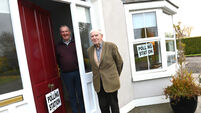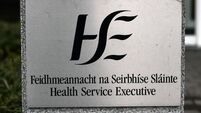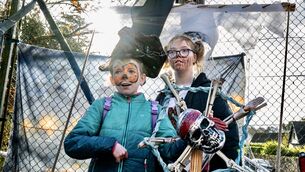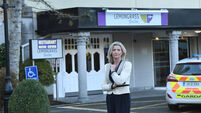Expert: Tuam DNA tests can be used at mother and baby home

A report by the expert technical group on the site said the cost of DNA testing could be an issue when it comes to examining any remains.
Last week, Minister for Children Katherine Zappone aired other concerns such as how extracting DNA can damage remains.
However, professor of population genetics at Trinity College Dublin (TCD), Dan Bradley — considered the country’s leading expert — said it was possible to test for DNA there.
“With samples, we’ve worked on there was no way we can work out a meaningful relative, but these [the Tuam] samples are different.
“Modern technologies are very powerful for working with these samples. The cost is thousands, it’s not millions. But is it possible? It could be, from what I know,” said Prof Bradley.
His lab has worked on several hundred human and animal specimens and while accepting “you can never predict the outcome”, he said the success rate in Ireland, for extracting DNA, is quite high.
“The only way to know if you’ll get DNA is to test it. We’ve tested samples and got nothing. Generally speaking in Ireland, with samples, we’ve had a success rate of three out of four,” said Prof Bradley.
The report by the Tuam technical group also said the best samples for DNA purposes were from teeth which were not adequately developed in children under the age of two.
However, Prof Bradley said there is a better bone from which to extract DNA.
“The best bone to use is the petrous bone which contains the inner ear and is attached to the skull. This can work with children. Teeth are also good for DNA but the petrous bone is five times better,” he said.
Speaking specifically about the cost of DNA testing, which is now done through what is known as next-generation sequencing, the expert said the expense has dropped considerably since it was first developed.
“Before 2000, the first human genome was sequenced for approximately €200m and it took years. Now a human genome can be sequenced for, say, thousands of euro and in a couple of months,” said the professor.
Two years ago, Prof Bradley and colleagues at TCD and Queen’s University Belfast, published research after sequencing the first genomes from ancient Irish people. One of them was a 5,200-year-old farming woman.
“We have research projects here in our lab where we have got whole genomes from specimens that go back 10,000 years. So it is possible to extract DNA going back a century,” said Prof Bradley.
However, when it comes to Tuam, he said there are factors other than the age of bones that matter.
The chemistry of the soil has an effect on the bones. Whether the soil is water-logged is another factor.
David MacHugh, professor of genomics at UCD, has also spoken about Tuam.
“I am perplexed by the hesitancy in applying modern forensic genomics to genetic identification of the skeletal material found at the Tuam mother and baby home,” he wrote in a letter in the Irish Timesyesterday.












